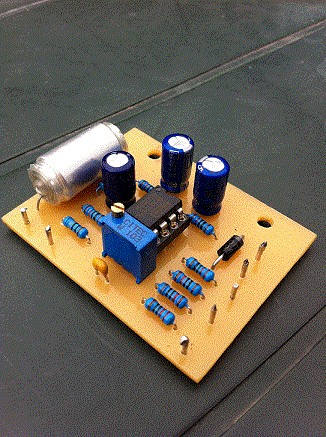Hi
I knocked up a small preamp for amplifying a magnetic pickup in my acoustic guitar, and have been gigging it with great joy for a few years and have always been very pleased with its sound. The circuit is basic and uses an OPA2134 as a gain stage and phase reverser, and is as below

The other day, I tried plugging in an LM4562 in place of the BB chip and was amazed at the improvement in the sound clarity and detail, the guitar sounds much better through it both in phones and my PA setup. But I am wondering if the LM4562, being a bipolar chip, could give me problems as the input impedance needs to be 1 MEG and is better suited to FET varieties of opamp. The PCB is quite small and as you see from the schem there is no supply decoupling directly on the chip supply pins. The OPA2134 behaves itself nicely, but then it is quite a forgiving chip!
Do you think the combination of chip and circuit could cause problems, other than the increased quiescent current, such as DC offsets etc, and are there any simple checks I can make to see if the LM4562 chip is behaving itself or not?
Thanking you all!
Ray
I knocked up a small preamp for amplifying a magnetic pickup in my acoustic guitar, and have been gigging it with great joy for a few years and have always been very pleased with its sound. The circuit is basic and uses an OPA2134 as a gain stage and phase reverser, and is as below

The other day, I tried plugging in an LM4562 in place of the BB chip and was amazed at the improvement in the sound clarity and detail, the guitar sounds much better through it both in phones and my PA setup. But I am wondering if the LM4562, being a bipolar chip, could give me problems as the input impedance needs to be 1 MEG and is better suited to FET varieties of opamp. The PCB is quite small and as you see from the schem there is no supply decoupling directly on the chip supply pins. The OPA2134 behaves itself nicely, but then it is quite a forgiving chip!
Do you think the combination of chip and circuit could cause problems, other than the increased quiescent current, such as DC offsets etc, and are there any simple checks I can make to see if the LM4562 chip is behaving itself or not?
Thanking you all!
Ray



